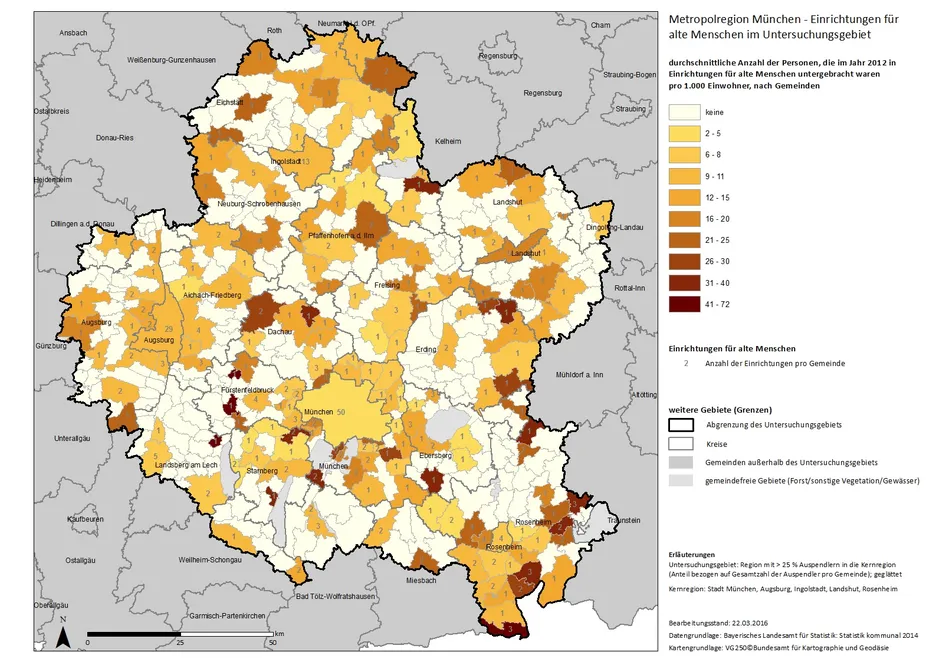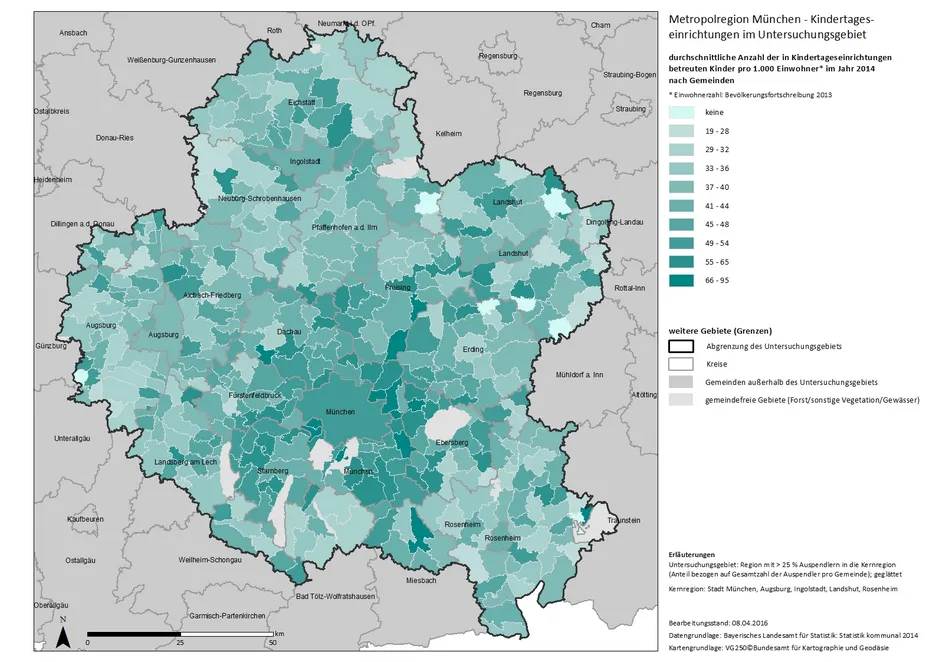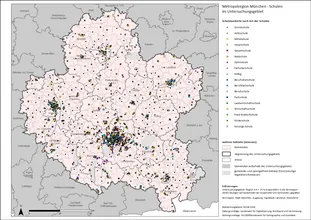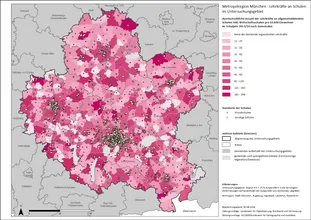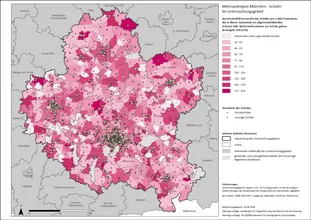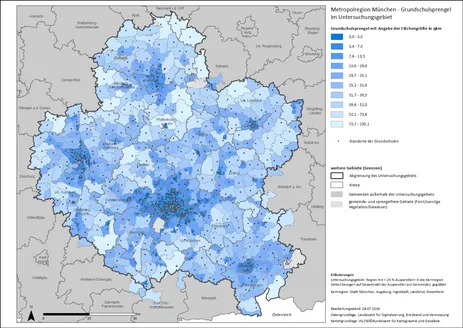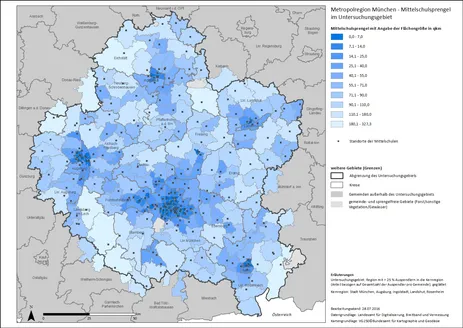Amenities
Particularly important for the population of an area is the presence of sufficient utilities. In a broader sense, this can include shopping facilities, banks or hospitals, for example. In this case, however, only facilities for specific age groups are discussed. These are, on the one hand, facilities for the elderly, and on the other, daycare centers and schools. The latter are particularly interesting for mobility, since it is often not only the children who move from their homes to the daycare center or school and back, but also their parents for driving services.
Facilities for elderly people
The provision of facilities for the elderly is quite varied in the study area. While these are more frequent in some areas (mostly around the larger cities), there are some areas where not a single facility can be found far and wide. In Rosenheim County, for example, there are very few facilities in the northern half, while almost every community in the southern half can boast at least one. This clustering is possibly related to the attractive landscape around Lake Chiemsee and the edge of the Alps, where people like to spend their twilight years.
The map shows the number of nursing home residents per 1,000 inhabitants and the number of facilities per municipality in 2012. The highest values for the former are achieved by rural municipalities that themselves have small populations and whose facilities also cover the needs of neighboring municipalities. This also applies to the frontrunners Oberschweinbach with 72 and Jesenwang with 70 home residents per 1,000 inhabitants (both Fürstenfeldbruck district). In rural areas in particular, a facility for the elderly often also has a highly visible effect on the age distribution of the community.
Day care centers
By contrast, the picture is much more homogeneous for daycare centers. The map shows the average number of children cared for in daycare centers per 1,000 inhabitants. Only eight communities in the study area do not have any such facilities. What is also striking is the concentration of high values around Munich, especially since this does not correlate particularly well with either the age distribution of the population or the average household size.
Schools
School-age children and adolescents also travel relatively short but sometimes very long distances every day to gain access to school. As with most institutions, the distances in rural areas are usually much longer, especially to secondary schools.
Map 1 shows the location of schools by type. While elementary schools - and to a lesser extent middle schools - are located throughout the country, secondary and special schools are generally located in larger towns. Some communities do not have their own community-affiliated school, but there may be a branch there.
An indication of the size of the schools is provided by the number of teachers (see Map 2). Here, too, municipalities with smaller populations have the highest values, but towns also stand out more clearly which, in addition to their own elementary and middle schools, also run grammar schools, intermediate schools, special schools and business schools or Rudolf Steiner schools. This is particularly true of small and medium-sized towns such as Eichstätt or Prien a. Chiemsee, which serve as supply centers for the surrounding area.
A similar picture is provided by the number of pupils (cf. Map 3), which can also be used as a measure of the size of the schools. The distribution differs only slightly from that of the number of teachers. A comparison of the two allows conclusions to be drawn about the support ratio.
In the course of evaluating the data, the school districts were also visualized. Each elementary and secondary school is assigned a specific catchment area (= school district) in which the school-age children residing there must generally attend this school. Depending on the number of inhabitants and schools, catchment areas can vary in size. This can be seen clearly in the elementary school districts (Map 4), where in rural areas one school is often responsible for several communities, while in larger cities one school sometimes covers only one district or even fewer. While the district of the "Grundschule an der Hochstraße 31" in Munich is only 0.02 square kilometers, the district of the "Carl-Orff-Grundschule Dießen am Ammersee" covers 130 square kilometers. However, the complete Ammersee is also included here.
The situation is similar for the middle school districts (Map 5). Here, too, the rural districts are often many times larger than in large cities, since there are fewer children per area. Overall, the districts of the middle schools are larger than those of the elementary schools, since not all children in an area attend the middle school but are distributed among the various types of secondary schools.
